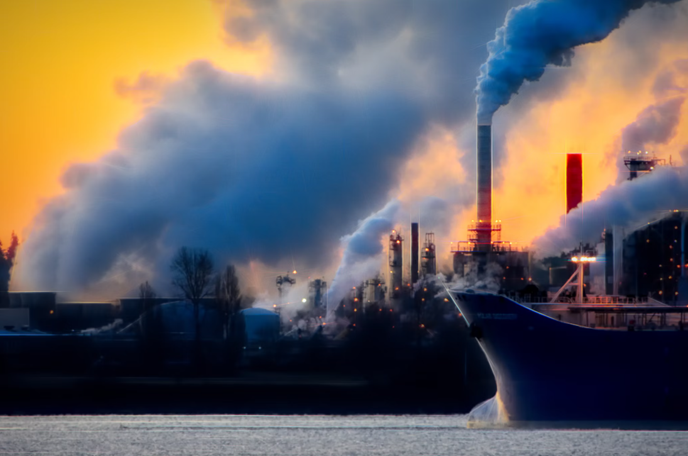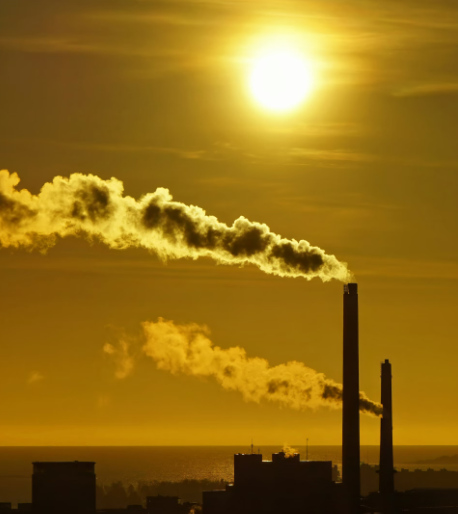An Edinburgh court has ruled that drilling at Rosebank, the UK’s last undeveloped oil and gas field, and Jackdaw, another large site, cannot begin until the operators, Shell, Equinor, and Ithaca, can provide a detailed assessment of their Scope 3 emissions. However, with the regulator yet to publish a consultation, there are currently more questions than answers.
As part of the process, operators must also submit an environmental statement to the offshore environmental regulator. Scope 1 and 2 emissions are already assessed by the operators within the Environmental Statements.
How do oil and gas companies accurately calculate Scope 1 and Scope 3 emissions? How do they measure the oil and gas when they can only guess the impact further down the downstream value chain? How far down the production chain should an environmental impact assessment reach? And what role can satellite and ground-based remote sensing technology play in ensuring that operators and regulators alike have access to a rich and accurate source of emission data? In the absence of clear guidance, which the Department for Energy Security and Net Zero (DESNZ) says it will publish Spring 2025, three leading environmental monitoring experts offer their opinions.
By James Gordon, Energy Writer
Estimating CO2 Emissions and Gas Leaks
Around Scope 1 emissions, Dr. Jane Hodgkinson, a reader in Applied Photonics at Cranfield University, who has extensive experience working in the energy sector, says there are two major routes to downstream greenhouse gas emissions: combustion products and gas leaks.
When it comes to estimating the CO2 produced by burning oil and gas (Scope 3), Dr. Hodgkinson thinks it likely that Shell, Equinor, and Ithaca would base their calculations on metering. She explained that this methodology assumes that “a known proportion of everything they produce will be burnt and will result in a certain proportion of CO2 emission”.
She added, “…There must be production plans so they should know what volumes they will aim to produce. Some of their product will not be combusted (e.g., oil to plastic, bitumen used in asphalt), but they will probably have a business plan for how much of each type of product they will generate. The calculation would be fairly straightforward.”
As for estimating gas leaks such as methane (Scope 1 and Scope 3), Dr. Hodgkinson says that “there may be some assumptions” that Shell, Equinor and Ithaca would need to make about gas emissions. She thinks that they would “probably assume that a certain proportion of throughput is leaked,” based on existing environmental reporting from gas transmission, distribution, transport, and storage infrastructure.

Regarding Scope 3 emissions, Neil Harris, a Professor of Atmospheric Informatics at Cranfield University, believes that the CO2 end product “is unavoidable” and that they can only claim any offset of that if there were credible CO2 removal technologies. “However,” there are not any at the moment and in any case the operations would be controlled by others, so there is nothing they (oil and gas companies) can do,” he added.
Dr. Jasmin Cooper, a Research Associate at Imperial College London, who has carried out extensive research on fugitive methane emissions, agreed. In terms of greenhouse gas emissions, while “it is relatively easy” for energy companies to estimate how much greenhouse gas will be emitted from petrol, diesel, and natural gas supply chains, guessing the emissions for other petroleum-based products “is less straight forward,” Dr. Cooper said.
“Chemicals made from oil and gas (ethane, ethylene, etc.) have much more complex supply chains and depending on what the eventual end use is, CO2 may or may not be emitted. For example, ethylene is used to make plastics, other chemicals, and to ripen fruit, so there will be much higher uncertainty in how much CO2 will be emitted from these supply chains. Obviously, CO2 in these instances will not always be from burning, but also from degradation of the products,” Dr. Cooper explained.
This begs the question how far down the downstream value chain would an environmental impact statement need to cover. Dr. Cooper says that while oil and gas companies have a good grasp of their gas and liquid fuels supply chains, she thinks estimating emissions from the chemical production chains would pose a much greater challenge. “They (oil and gas companies) may know the whole value chain (to end of life disposal) but tracking molecules of fossil fuel-based chemicals produced by oil and gas companies is tricky as companies who buy ethane or ethylene from them will buy the same chemical from other companies. This is mixed together to make a new product. This in turn may be used to make another product, for example – polypropylene used to make packaging, which is then used for a product bought in a shop.”
When it comes to estimating methane emissions, Dr. Jane Hodgkinson believes that sensor technology “can play a role in establishing reporting of existing infrastructure” while it can also “be instrumental in upgrading old infrastructure to enable better detection of leaks.”
However, she added, “Gas leaks are very difficult to detect and locate, and simply detecting them isn’t enough – companies also need to act on this information and prevent the leak.”
It is a view shared by Professor Harris, but he says that legacy monitoring sensor technology “is not a scalable solution” as the cost of such techniques is “high and there are many oil and gas sites with the potential to leak.
The problem is that there are on-site sensors which are good for detecting methane, but not necessarily measuring it,” he said.
Inequality Between Sensors
The uncomfortable reality is that not all sensors are equal. The detection limits of legacy tools, such as fixed-point sensors and satellite technology, are too high, while conventional monitoring systems, such as optical gas imaging cameras and methane sniffers, are often unable to detect what Wood Mackenzie calls ‘snowballer’ leaks. In a recent paper by Wood Mackenzie entitled, “Tackling the Oil and Gas Industry’s Methane Challenge”, the paper’s authors say that more than half of the leaks are “small scale operational emissions.” Wood Mackenzie’s Emissions Benchmarking Tool also reveals that the typical methane loss per field was less than 500 kg/hr. This, it says, is “below the measurable resolution of most current satellites” but, most crucially, Wood Mackenzie states that “96 percent of all fields have emissions on this scale.”
Professor Harris thinks that while there has been “a big improvement in the quality and quantity of satellite measurements of methane,” which can detect and track super-emitter events, he thinks that the high detection limits of satellite technology miss small leaks, coupled with the fact that they cannot provide accurate readings in cloudy weather. He says that oil and gas companies “need to come up with low-cost, on-site measurement systems that can be combined with satellite observations.”

He added, “…It is likely that next generation sensors will be used in AI-enabled networks which allows lower-cost sensors to be used. Having said that, CH4 is very hard to measure well.”
In addition to using satellite technology, this is why many international oil companies are also incorporating state-of- the-art, ground-based monitoring sensor systems into their MRV and LDAR process safety programs.
Peter Maas, Grandperspective’s GmbH’s CEO, says that its remote sensors “are particularly effective” at detecting methane and other greenhouse gases. This is because methane’s “spectral signature is of a much higher frequency than other gases,” Maas explained. “Optical gas imaging cameras or fixed-point sensors must also compensate for humidity and temperature to ensure an accurate reading. This is often beyond their capability and it means that small-scale leaks often go undetected.”
Conclusion
At a time when climate laws – particularly regulation around methane abatement – are increasing, advanced sensor technology, which strengthens environmental monitoring programmes, is very much in demand. This is because with economies of scale kicking in, it is not just oil and gas companies who possess the reach, the range, and the specificity to monitor ‘snowballer’ leaks. Anyone can do so now, including individual states, environmental pressure groups, and individuals.
“This newly acquired visibility has proved a game-changer,” said Maas. “It has meant that multinational oil field service companies are investing even greater resources into small-scale leak monitoring, detection, and reporting programs, which enable them to carry out low-touch, site-wide emission audits efficiently and effectively.” Professor Harris believes that in the future, satellite or ground-based systems, or a combination of both, driven by AI, could pave the way for oil and gas companies to create “a simple digital twin”.
Dr. Hodgkinson is not sure however what role, if any, a digital twin might play. “It’s (a digital twin) not essential,” she says, “They (oil and gas companies) will certainly need to make assumptions to enable forward predictions. We would hope that these are valid assumptions based on evidence from existing infrastructure.”
Peter Maas says that before such models could be considered, the data building blocks need to be put in place. “The success of a digital twin or digital shadow is entirely dependent on data. It needs to be a rich and continuous seam of information. One way of generating that real-time data is through passive ground-based remote sensing technology, where detection limits are extremely low. Sensors that collect millions of spectra of data each day could in theory provide the foundations on which a digital twin or digital shadow is built.”
Not only could next-generation sensor and satellite technology lend greater governance, transparency, and accountability to the emission reporting process, at a time when national and global energy security risks have increased exponentially, it could provide regulators with the data they require to make more informed decisions as to whether an oil and gas project should go ahead.


